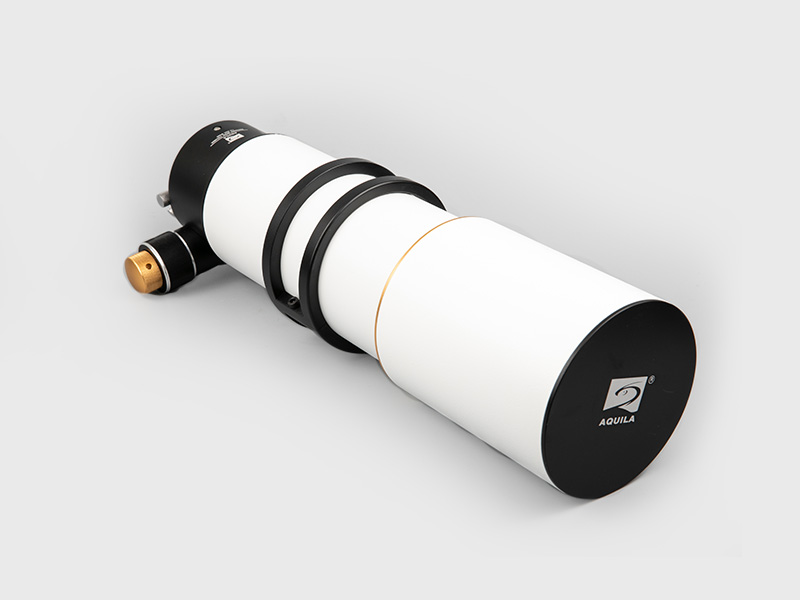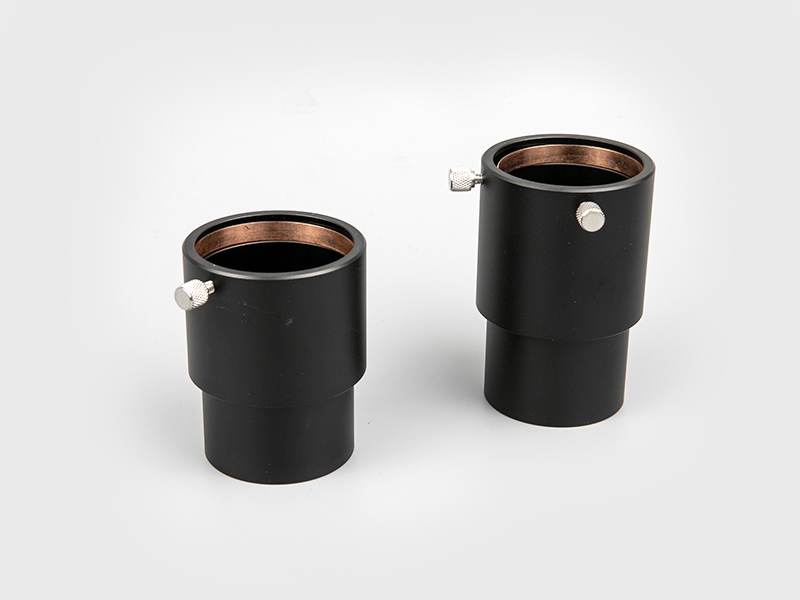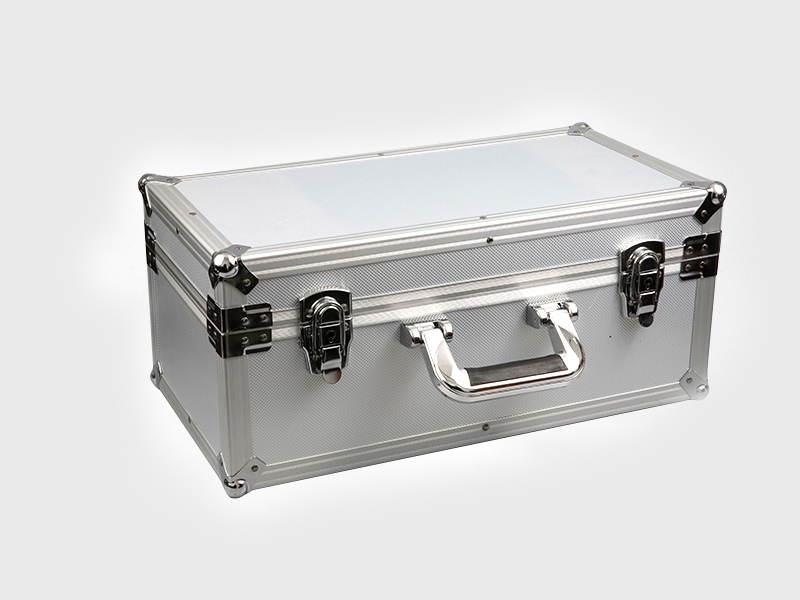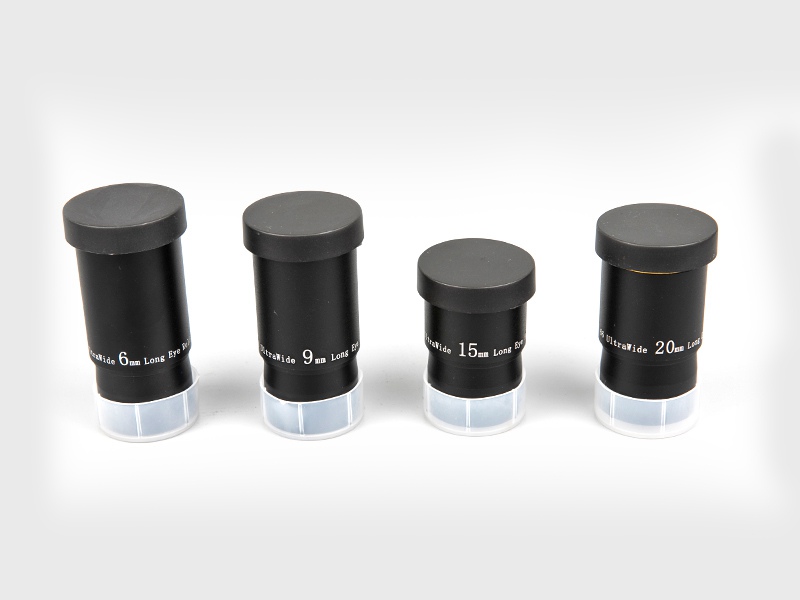In a broad sense, telescopes include not only optical telescopes operating in the visible light band, but also radio, infrared, ultraviolet, X-ray, and even gamma-ray telescopes. First, optical telescopes. In 1609, Galileo produced the first telescope, and it has been Nearly four hundred years of history, during which a major leap has been experienced. According to the type of objective lens, it can be divided into three types:
1.Refracting telescope
The objective lens of a refracting telescope is composed of a lens or lens group. The early objective lens was a single-piece structure, and the chromatic aberration and spherical aberration were serious, making the celestial body viewed with colored spots. In order to reduce the chromatic aberration, people desperately increased the focal length of the objective lens, in 1673, J. Hevelius built a 46-meter-long telescope. The entire lens barrel was hoisted on a 30-meter-high mast. It required multiple people to use a rope to rotate and lift. Huygens simply separated the objective lens and the eyepiece, and The objective lens was hung on a hundred feet high pole. It was not until the end of the 19th century that people invented a composite achromatic objective lens made of two glasses with different refractive indices to make a convex lens and a concave lens, and then combined, that made this length race come to an end.
Refracting telescopes are divided into two types: Galileo structure and Kepler structure. Among them, the Galileo structure has the longest history. Its eyepiece is a concave lens, which can directly form an upright image, but the field of view is small, generally for children who are 2 to 4 times the civilian Used in toys. Most common telescopes are of Kepler structure, and their eyepieces are generally convex lenses or lens groups. Because there is a real image in the light path, a ranging or aiming reticle can be installed to measure the distance. But simple The Kepler structure formed by the Kepler structure is inverted, and it is necessary to add an erect image system in the light path to make it straight. Fold back to shorten the length of the whole machine.
2.Reflecting telescope
This type of mirror was first invented by Newton. The objective lens is a concave reflector with no chromatic aberration, and the spherical aberration can be eliminated by making the concave surface into a rotating paraboloid. The concave surface is coated with a reflective film, usually aluminum. The mirror tube of the reflecting telescope is short, and It is easy to manufacture larger apertures, so modern large astronomical telescopes are almost invariably reflective structures.
In the structure of the reflecting telescope, in addition to the main objective lens, it is also equipped with one or several small reflecting mirrors to change the direction of the light to facilitate the installation of the eyepiece. Since the incident light of the reflecting telescope is only reflected on the surface of the objective lens, the interior of the optical glass The quality requirement is lower than that of the refractor. In 1990, the United States built the Keck telescope with the largest aperture in Hawaii at that time. The mirror adopted some unprecedented new technologies: 1. The main objective lens is made up of 36 hexagonal thin lenses, and the thickness is It is only 10 cm. 2. There is a computer controlled back support point to compensate for the deformation caused by gravity. 3. It can compensate for atmospheric disturbances by changing the curvature of the mirror. The adoption of these new technologies makes the requirement for humans to launch space telescopes no longer urgent.
3. Catadioptric telescope.
The objective lens of a catadioptric telescope is a combination of a refractor and a reflector. The primary mirror is a spherical reflector, and the secondary mirror is a lens to correct the aberration of the primary mirror. This type of telescope has a large field of view and strong optical power, which is suitable for Observe meteors, comets, and survey the sky to find new celestial bodies. According to the shape of the secondary mirror, the catadioptric mirror can be divided into Schmidt structure and Maksutov structure. The former has a large field of view and small aberrations; the latter is easy to manufacture. , The principle of a radio telescope (radio telescope) is similar to that of a satellite TV antenna receiver. It receives electromagnetic radiation signals from distant celestial bodies and analyzes its intensity, frequency spectrum and polarization. It has two basic indicators. ——Resolution and sensitivity. From optics, we know that the resolution of a telescope is proportional to the wavelength λ and inversely proportional to the aperture D of the telescope. Because optical telescopes work on the order of micrometers in wavelength, while radio telescopes work at On the order of millimeters, the difference is 10,000 times, so to achieve the same resolution, the aperture (aperture) of the radio telescope must be 10,000 times larger than that of the optical telescope. Fortunately, because of the use of a radio interferometer, it can be used very far apart The straight-line distance between the radio telescopes in the two places replaces the true aperture of the telescope. This technique is called very long baseline interference. It can make the effective aperture as large as several thousand kilometers or even farther, which greatly improves the resolution and makes it possible for people See the fine structure of celestial bodies. However, there are gains and losses. The sensitivity is reduced while the resolution is improved. The sensitivity depends on the effective area of the radio telescope. The larger the antenna, the higher the sensitivity. However, due to the radio interferometer In the application, we used the length of the straight line (baseline) between the two telescopes to replace the real aperture, but did not increase the effective area of the corresponding antenna, so that the sensitivity of the radio telescope was doubled, which also determines the radio astronomy. Research objects-mainly the observation of high-energy celestial bodies and the analysis of radio astronomy lines.

 English
English 日本語
日本語 Deutsche
Deutsche España
España








